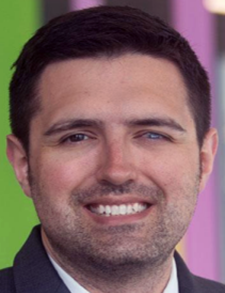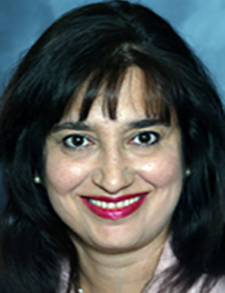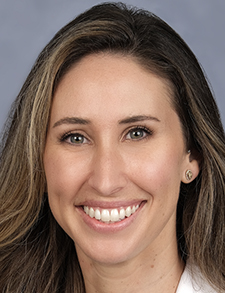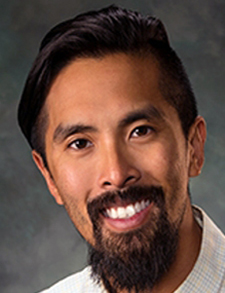Pediatric Hospital Medicine (PHM) was designated a subspecialty by the American Board of Medical Specialties in 2016, with certification through the American Board of Pediatrics (ABP). While this recognition was a significant milestone, many hospitalists within the PHM community are concerned that the current certification process excludes competent individuals from our field and will have unintended consequences for physicians and the children we serve.
The narrow path to certification
With the introduction of PHM certification came a practice pathway whereby pediatric hospitalists could achieve certification without fellowship, provided they met a strict set of criteria set forth by the ABP. Although some modest concessions were made to these criteria in response to concerns by the community regarding gender bias and the impact of the COVID-19 pandemic, the criteria remained so strict that numerous experienced hospitalists remained ineligible. The reasons an experienced hospitalist may not have qualified for the practice pathway are myriad and often deeply personal, including family responsibilities, health issues, and non-clinical duties.
Starting with the graduating residency classes of 2020, the practice pathway was closed altogether, requiring all physicians joining our field to participate in a two-year fellowship to become certified in PHM. Despite this requirement, the current PHM fellowship infrastructure is insufficient to accommodate a significant proportion of the candidates applying for positions; one-third of applicants did not match in the most recent cycle.1 The dearth of fellowship positions has left numerous physicians unmatched and unable to become certified in PHM.
Board-ineligible physicians face an uncertain future with only a few options: find a job with the hope of matching into a PHM fellowship in a subsequent cycle, work as a non-certified hospitalist, or forsake our field entirely.2
Consequences for the individual
One concern raised by board-ineligible trainees, early-career physicians, and experienced clinicians is whether they will be treated as second-class hospitalists compared to their board-certified peers.2,3 Board eligibility has started to become a requirement for employment at a growing number of institutions, limiting the opportunities available for career mobility and advancement, particularly in university-based settings. Dividing our workforce based on certification status without alternative avenues to obtain it devalues the individual and excludes qualified physicians from institutions and geographic locations where they would otherwise thrive as clinicians.
The closure of the practice pathway may cause additional harm to certain vulnerable individuals and limit the diversity of our field. Family responsibilities and medical school debt are disproportionately carried by women and minorities, respectively, and are both negatively associated with pursuing a subspecialty fellowship.4-6 Placing barriers in the way of groups that have historically been underrepresented could undo some of the progress PHM has made toward diversity, equity, and inclusion.
Just a few years ago, a physician could join our field and prove their competence through dedication to their patients and diligence in the craft. The vast majority of our field and leadership followed this career path. With the introduction of certification, the practice pathway rightly recognized the value of the clinician’s hands-on experience caring for hospitalized children. Now that the practice pathway is closed, many hospitalists with significant clinical experience (including during the height of the COVID-19 pandemic) feel they are being told that their skills and years of personal sacrifice do not matter.
Consequences for the workforce
To ensure children can continue to receive the care they need, we need to promote a resilient, diverse workforce and ensure future generations of physicians are well-trained. While many of the recent closures of inpatient pediatric units across the country are rooted in market forces exacerbated by the pandemic, we must recognize that any action that weakens our workforce has the potential to accelerate this trend. This could have an disproportionate effect on underserved pediatric populations.
The number of PHM fellowship positions available each year, although growing, is insufficient to train the number of pediatric hospitalists needed to maintain our workforce.7 If PHM board certification in its current form becomes a minimum standard for employment, staffing shortages may develop. Rural and community hospitals would likely be affected first, although university sites may not be spared if nocturnist coverage continues to expand and more physicians leave medicine.8,9 Alternatively, if PHM moves toward having certified hospitalists at university-based centers with non-certified hospitalists limited to community settings, a “two-tiered” PHM hierarchy would be almost inevitable.3
Mandating extended training in PHM may negatively affect trainees’ exposure to our field. Spurred by our field’s push toward a fellowship requirement to practice PHM, the Accreditation Council for Graduate Medical Education is contemplating reducing the time pediatric and family medicine residents spend on pediatric wards. Fewer residents will be available to care for patients in the near term. This gap will need to be filled by additional pediatric hospitalists, although the PHM board certification process may, actually, be discouraging residents from choosing PHM as a career.10
Solutions
We each know someone affected by the board certification process. These affected individuals are our colleagues, mentees, and friends, and they deserve to have their voices heard. We should monitor the impact of board certification on our workforce and proactively seek solutions that strengthen our discipline. An expanded practice pathway can and should coexist with fellowships to allow competent pediatric hospitalists from different backgrounds to practice in hospitals with diverse needs. Although this would be a departure from the precedent set by prior developing specialties, we believe bold action is needed to overcome the unprecedented challenges facing health care today.

Thomas B. Mike, MD

Behnoosh Afghani, MD

Gabrielle Fisher, MD

Richard Vo, MD
Dr. Mike is a pediatric hospitalist at Akron Children’s Hospital and Wooster Community Hospital, and a clinical assistant professor of pediatrics at Northeast Ohio Medical University in Rootstown, Ohio.
Dr. Afghani is a professor of pediatrics and chief of the University of California Irvine School of Medicine pediatric hospitalist division, and she practices pediatric hospital medicine at Children’s Hospital of Orange County in Orange County, Calif. She is also a pediatric infectious disease specialist and the founding director of several medical education programs.
Dr. Fisher is a pediatric hospitalist at Holtz Children’s Hospital and assistant professor of clinical pediatrics at the University of Miami Miller School of Medicine in Miami.
Dr. Vo is a rural community pediatric hospitalist at Campbell County Memorial Hospital in Gillette, Wyo.
References
- National Resident Matching Program. Results and data: Specialties matching service 2022 appointment year. Washington, D.C. 2022. Published May 2022. Available online at https://www.nrmp.org/wp-content/uploads/2022/05/2022-Main-Match-Results-and-Data_Final.pdf. Accessed 6/27/22.
- Ezzio C. Inclusivity needed in PHM fellowships. The Hospitalist. 2021;25(3):12-13.
- Welsh G. The importance of community pediatric hospital medicine. The Hospitalist. 2021;25(1):27.
- Leyenaar J, Frintner M. Graduating pediatric residents entering the hospital medicine workforce, 2006-2015. Acad Pediatr. 2018;18(2):200-7.
- Frintner MP, et al. Pediatric resident debt and career intentions. Pediatrics. 2013;131(2):312-8.
- Association of American Medical Colleges. Physician Education Debt and the Cost to Attend Medical School 2020 Update. Association of American Medical Colleges. Washington, DC 2020.
- Wang ME, et al. The future of pediatric hospital medicine: Challenges and opportunities. J Hosp Med. 2020;15(7):428-430.
- Oshimura J, et al. Inpatient staffing within pediatric residency programs: work hour restrictions and the evolving role of the pediatric hospitalist. J Hosp Med. 2012;7(4):299-303.
- Sinsky CA, et al. COVID-related stress and work intentions in a sample of US health care workers. Mayo Clin Proc Innov Qual Outcomes. 2021;5(6):1165-1173.
- Chandrasekar H, et al. A changing landscape: Exploring resident perspectives on pursuing pediatric hospital medicine fellowships. Hosp Pediatr. 2021;11(2):109-115.
Thank you for publishing this article. In addition, the current PHM fellowship curriculum consists of 6-8 months of clinical electives, divided into 4 weeks blocks covering the different subspecialities, that you just completed as a resident. An additional month of pulm, neuro, critical care, GI, Heme/Onc etc will not eliminate the need to consult those subspecialists, so whats the point of the additional formal training. The bulk of the fellowship is research and QI. Those skills aren’t of value to every hospitalist. Those who don’t value the benefits of the fellowship should still have an option of secure certification, without having to do one.
Completely agree with all points. Further the content in the phm board exam overlaps significantly with gen peds boards. It just does not represent the skills and knowledge hospitalists have outside of any fellowship. This was a rushed process without objective examination of consequences in a growing field. SHM pathway is more appropriate and if that could be more open, accessible or specific to pediatrics, we could encourage that alternative.